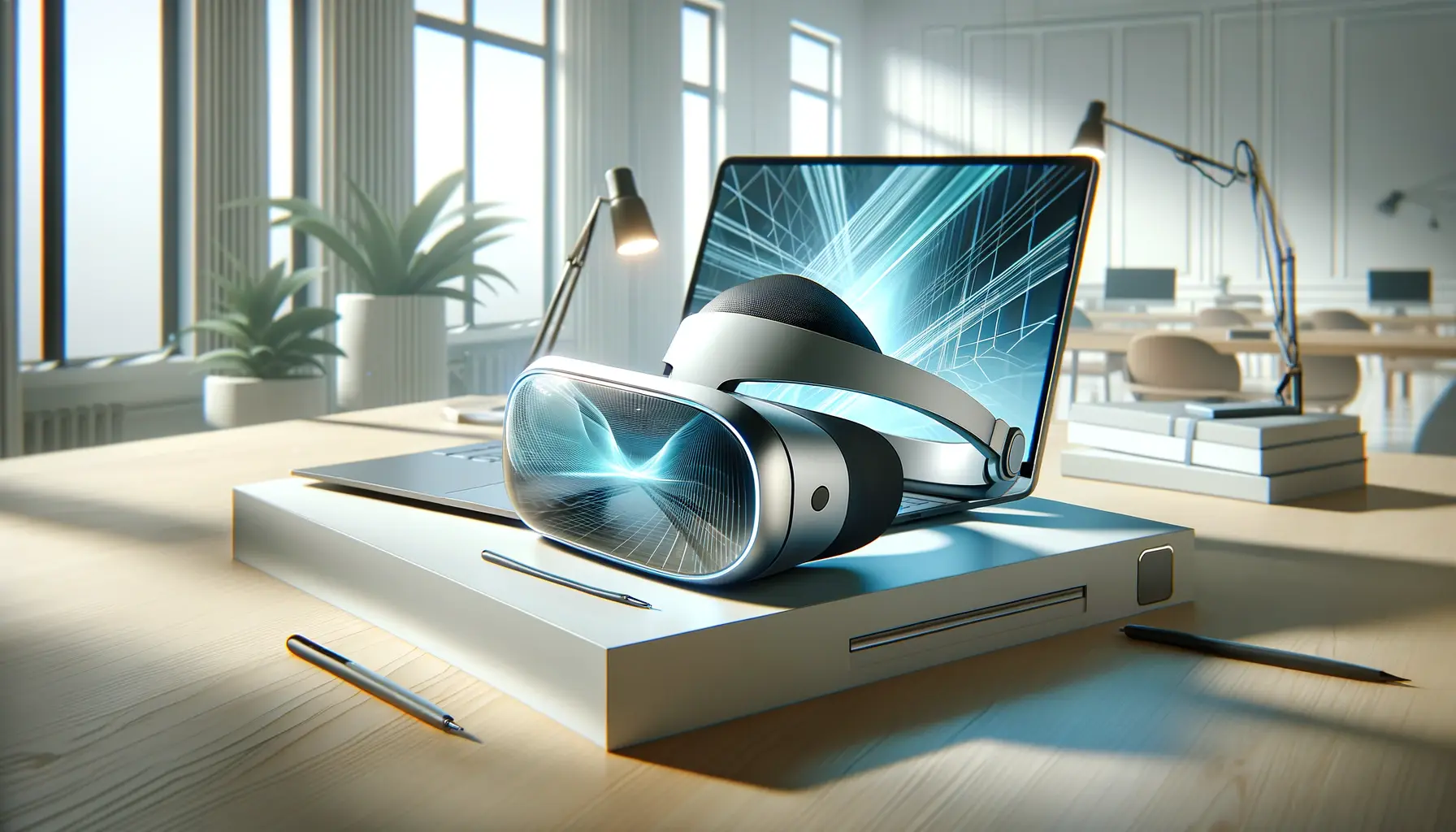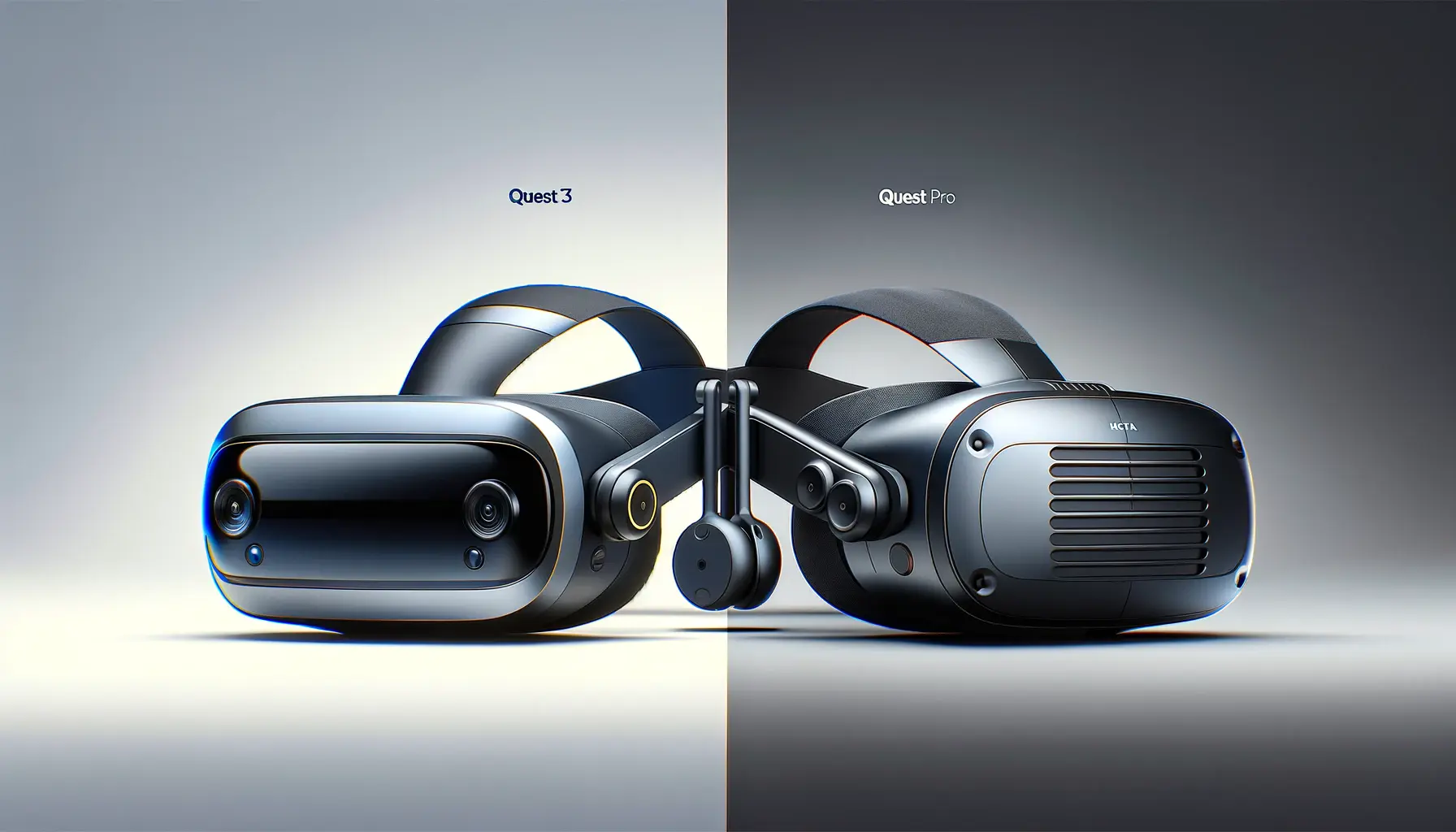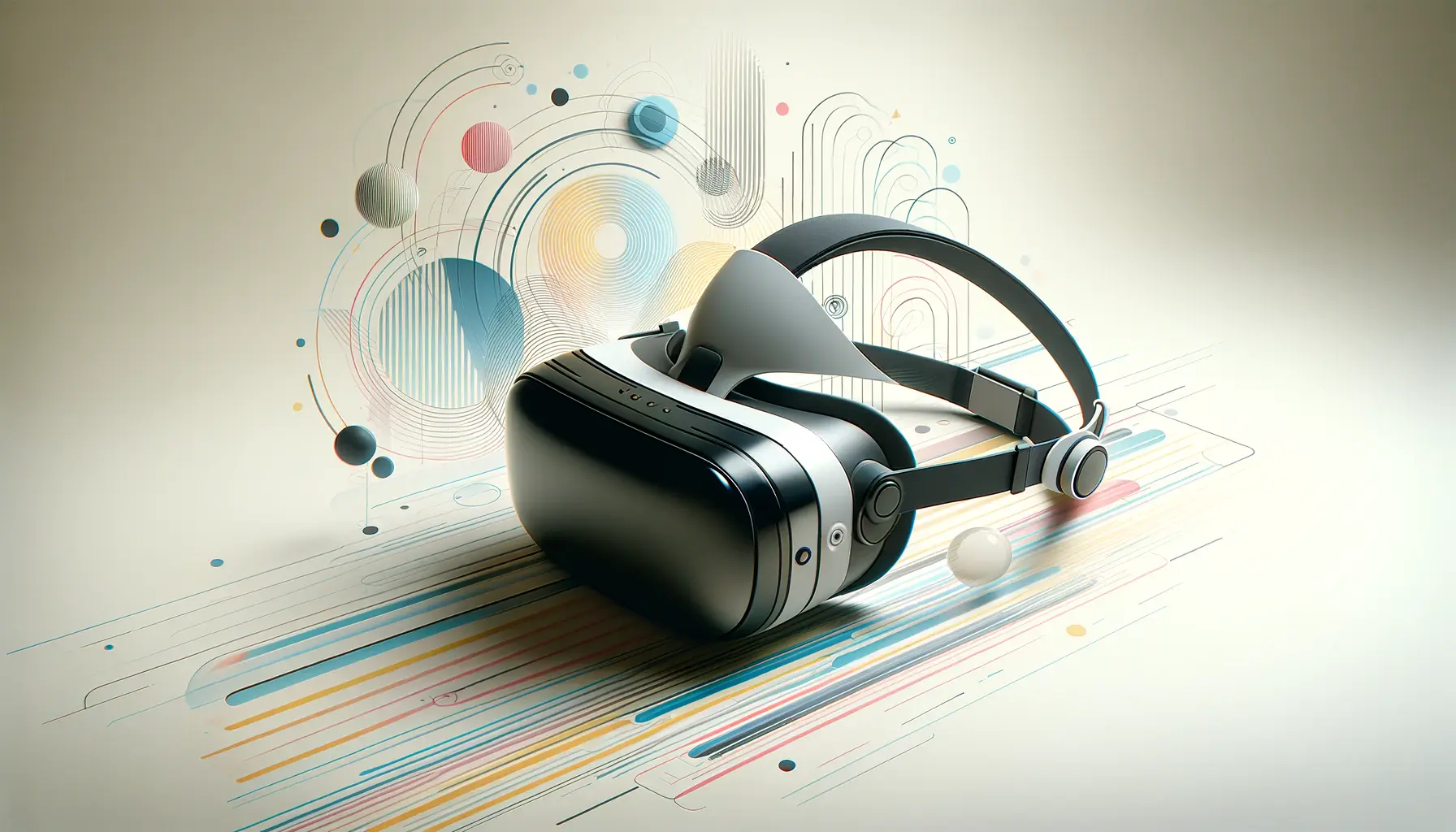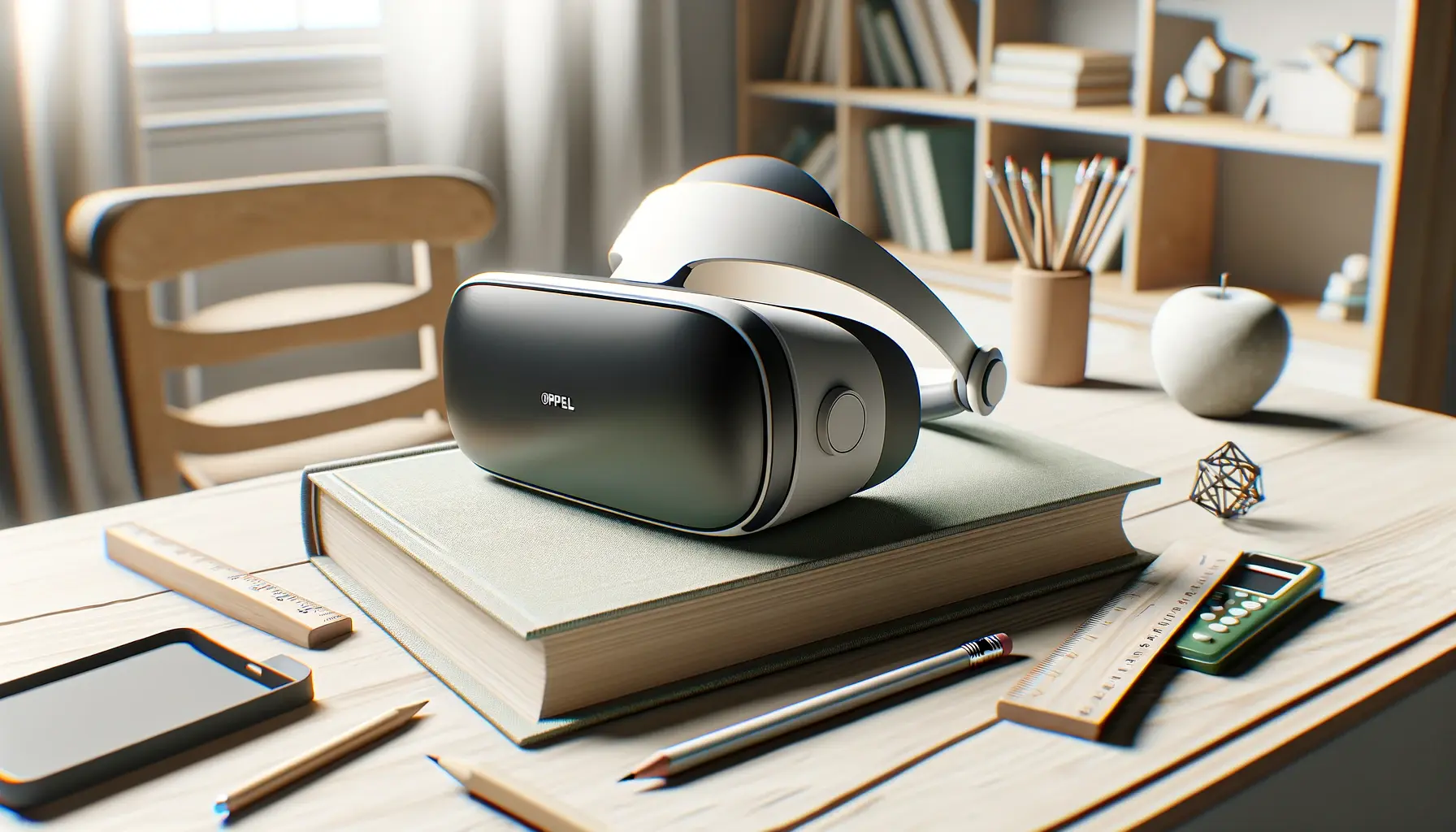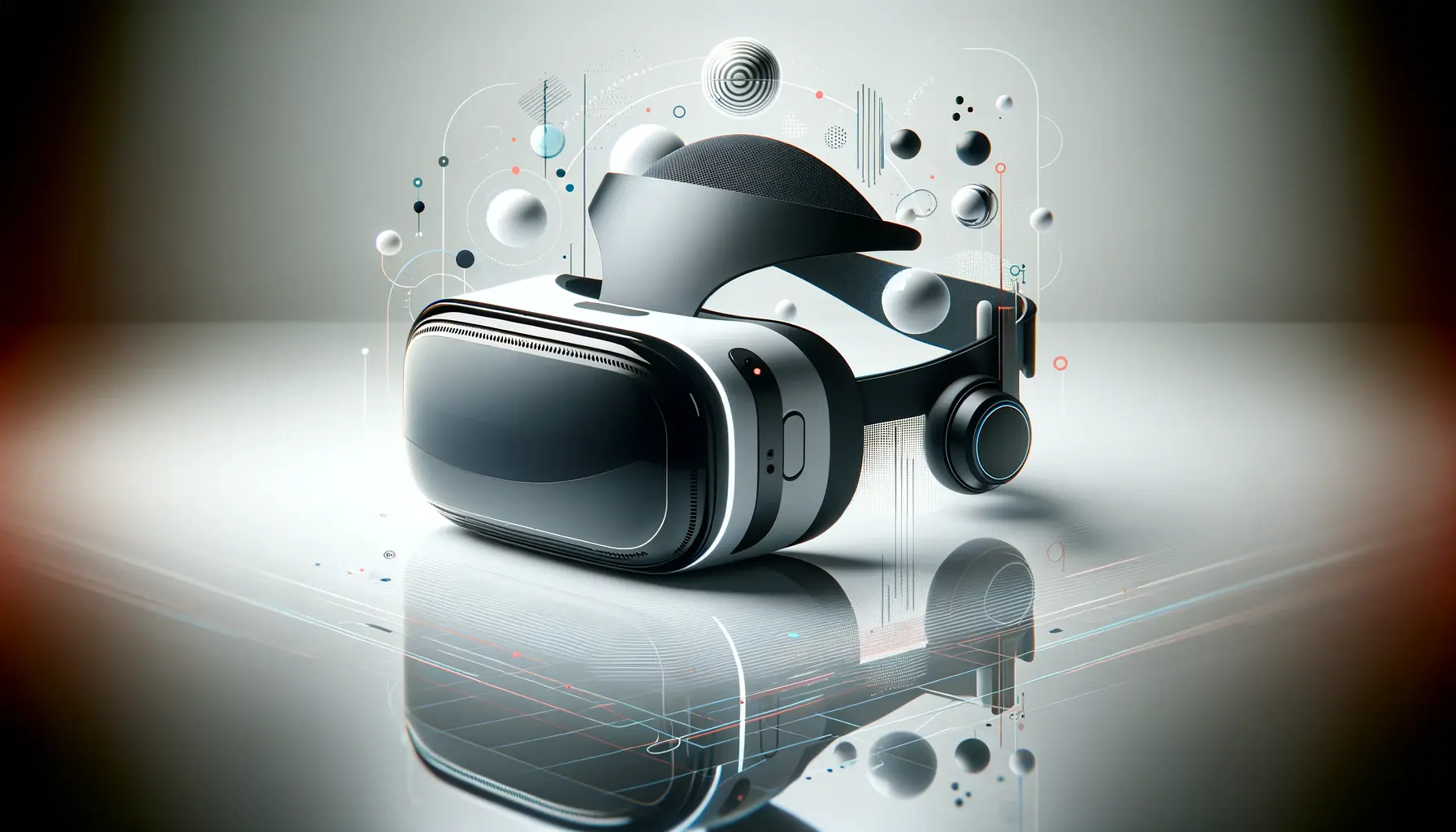The integration of virtual reality (VR) into the workplace has been a topic of interest for many years, but with the advent of the Meta Quest 3, we are witnessing a new era of professional engagement and productivity.
The Meta Quest 3, designed with the modern workforce in mind, promises to revolutionize how we approach work, training, and collaboration.
This article delves into the capabilities of the Meta Quest 3 and its potential to transform the workplace.
As businesses continue to navigate the challenges of remote work and digital transformation, the Meta Quest 3 emerges as a powerful tool to bridge the gap between virtual and physical workspaces.
With its advanced features and immersive experience, it offers a unique opportunity for companies to enhance their work processes, employee training, and team collaboration.
- Understanding the Meta Quest 3
- Enhancing Training and Development
- Facilitating Collaborative Workspaces
- Streamlining Design and Visualization
- Optimizing Operations and Maintenance
- Advancing Healthcare and Medical Training
- Empowering Education and Learning
- Embracing the Future with Meta Quest 3
- Meta Quest 3 for Work: Frequently Asked Questions
Understanding the Meta Quest 3
The Meta Quest 3 is not just another VR headset; it’s a comprehensive solution designed to meet the demands of the modern workplace.
Equipped with cutting-edge technology, it offers unparalleled mixed reality experiences, allowing users to interact with virtual elements in a real-world setting.
This blend of virtual and physical realities opens up new possibilities for work, training, and collaboration.
One of the standout features of the Meta Quest 3 is its enhanced mixed reality capabilities.
With improved pass-through cameras and depth sensors, users can see and interact with their physical environment while engaged in a virtual space.
This feature is particularly beneficial for tasks that require a blend of virtual and real-world interaction, such as design, engineering, and remote assistance.
Revolutionizing Remote Work
The global shift towards remote work has highlighted the need for tools that can replicate the collaborative and interactive nature of physical office spaces.
The Meta Quest 3 addresses this need by providing a platform for virtual meetings and workspaces that feel as real as their physical counterparts.
With the ability to create virtual offices, employees can interact with colleagues in a 3D space, making remote work more engaging and productive.
Moreover, the Meta Quest 3’s virtual workspaces are customizable, allowing businesses to create environments that reflect their brand and culture.
This customization not only enhances the user experience but also fosters a sense of belonging and team unity, even in a remote setting.
The Meta Quest 3’s mixed reality capabilities and customizable virtual workspaces are set to redefine the concept of remote work, making it more interactive, engaging, and productive.
Enhancing Training and Development
The Meta Quest 3’s immersive technology presents a groundbreaking approach to employee training and development.
By leveraging virtual reality, companies can create realistic simulations and training scenarios that are not only cost-effective but also highly engaging for employees.
This hands-on approach to learning facilitates better retention of information and skills.
Training programs in VR can simulate real-life situations that would be too dangerous, expensive, or impractical to recreate in the real world.
From emergency response drills to complex machinery operation, the Meta Quest 3 enables employees to practice and hone their skills in a safe and controlled environment.
Case Studies in VR Training
- Medical Training: Medical professionals can use the Meta Quest 3 to simulate surgical procedures, allowing them to practice without risk to patients. This type of training has been shown to improve surgical precision and patient outcomes.
- Manufacturing and Engineering: Engineers and technicians can explore and interact with 3D models of machinery or buildings, gaining a deeper understanding of their workings and identifying potential issues before they arise in the physical world.
- Customer Service Training: Customer service representatives can engage in role-playing scenarios that mimic challenging customer interactions, helping them develop better communication and problem-solving skills.
Incorporating VR into training programs not only enhances learning outcomes but also introduces an element of fun and engagement that traditional methods lack.
Benefits of VR Training
- Increased Engagement: VR’s immersive nature captures the attention of learners, leading to higher engagement levels compared to traditional training methods.
- Safe Learning Environment: VR allows employees to make mistakes and learn from them in a risk-free environment, which is crucial for high-stakes industries.
- Scalability: Once developed, VR training programs can be deployed across multiple locations, making it a scalable solution for businesses of all sizes.
- Cost-Effectiveness: Although the initial investment in VR technology may be significant, the long-term savings on training costs can be substantial, especially for large-scale training needs.
Facilitating Collaborative Workspaces
The Meta Quest 3 transcends geographical boundaries by creating virtual spaces where teams can collaborate as if they were in the same room.
This feature is particularly valuable for companies with a global workforce, enabling seamless collaboration across different time zones and locations.
The ability to share and interact with digital objects in real-time fosters a collaborative environment that traditional video conferencing tools cannot match.
These collaborative workspaces are not limited to meetings and discussions.
They can be used for a wide range of activities, including brainstorming sessions, project planning, and even virtual team-building exercises.
The immersive nature of VR encourages participation and creativity, leading to more productive and engaging meetings.
Key Features for Collaboration
- Shared Virtual Environments: Teams can work together in a shared virtual space, enhancing the sense of presence and collaboration.
- Real-time Interaction: Users can interact with virtual objects and each other in real-time, making collaboration more dynamic and effective.
- Customizable Workspaces: Virtual workspaces can be customized to suit the needs of the team, whether it’s a virtual whiteboard for brainstorming or a 3D model for project planning.
Improving Remote Team Dynamics
The Meta Quest 3’s collaborative tools have the potential to significantly improve the dynamics of remote teams.
By providing a more natural and interactive way to communicate, VR can reduce the sense of isolation often experienced by remote workers.
The ability to ‘physically’ work alongside colleagues in a virtual space can strengthen team bonds and improve overall team cohesion.
Furthermore, the immersive experience of VR meetings can lead to better focus and fewer distractions compared to traditional video calls.
This heightened level of engagement can result in more productive meetings and faster decision-making processes.
While the Meta Quest 3 offers a promising solution for remote collaboration, it’s important for companies to consider the potential challenges, such as ensuring all team members have access to the necessary hardware and managing the learning curve associated with new technology.
Streamlining Design and Visualization
The Meta Quest 3 is set to revolutionize the fields of design and visualization by offering professionals a new way to create, modify, and interact with their work in three dimensions.
Architects, engineers, and designers can leverage the headset’s capabilities to immerse themselves in their creations, enabling a level of detail and spatial understanding that 2D screens cannot provide.
This immersive experience facilitates a deeper comprehension of spatial relationships, scale, and design aesthetics.
Moreover, the ability to collaboratively explore and modify designs in real-time with clients or team members around the globe not only streamlines the design process but also enhances client engagement and satisfaction.
By virtually walking through a building design or exploring a new product prototype in 3D, stakeholders can provide immediate feedback, leading to faster iterations and a more efficient design process.
Transforming Architectural Design
- Virtual Walkthroughs: Architects can create immersive presentations that allow clients to walk through their future homes or buildings, experiencing the space as it would exist in reality.
- Real-time Modifications: Changes to designs can be made on the fly during a presentation, allowing for immediate visualization of different options and decisions.
Enhancing Product Development
For product designers, the Meta Quest 3 offers a powerful tool for prototyping and testing.
By visualizing products in 3D space, designers can identify potential issues and improvements early in the development process, reducing the need for physical prototypes and speeding up the time to market.
This capability is especially beneficial for complex products where understanding the interaction of various components is crucial.
In addition to design and development, the Meta Quest 3 can also be used for consumer research, allowing companies to gather feedback on virtual prototypes from potential users.
This approach can provide valuable insights into user preferences and usability issues, further informing the design process.
The Meta Quest 3’s impact on design and visualization extends beyond improving individual workflows; it has the potential to fundamentally change how industries approach the creation and development of spaces and products.
Optimizing Operations and Maintenance
The Meta Quest 3 is not only a tool for collaboration and design but also a significant asset for optimizing operations and maintenance within various industries.
By integrating VR into their operational processes, companies can achieve higher efficiency, reduce errors, and lower costs.
The immersive environment provided by the Meta Quest 3 allows for detailed inspections, complex procedural training, and troubleshooting without the need for physical presence, which is particularly advantageous in environments that are dangerous, hard to reach, or require high levels of sanitation.
Furthermore, the ability to simulate operational scenarios in a controlled virtual environment enables teams to prepare for and manage potential issues more effectively.
This proactive approach to maintenance and operations can significantly reduce downtime and improve overall safety.
Enhancing Equipment Maintenance Training
- Immersive Training Simulations: Maintenance personnel can practice on virtual replicas of equipment, gaining familiarity with procedures before handling the actual machinery, thereby reducing the risk of errors and accidents.
- Remote Assistance: Experts can guide on-site technicians through complex repairs in real-time, overlaying instructions and diagrams directly onto the technician’s field of view, which accelerates the repair process and ensures accuracy.
Streamlining Facility Management
For facility managers, the Meta Quest 3 offers a comprehensive overview of building operations, allowing them to conduct virtual inspections and monitor systems without physically accessing each location.
This capability is invaluable for large facilities or those spread across multiple sites, as it enables managers to oversee operations more efficiently and respond to issues more swiftly.
In addition, VR can be used for space planning and optimization, helping managers to visualize changes in layout or equipment placement without the need for physical rearrangement.
This flexibility can lead to more effective use of space and resources, contributing to overall operational efficiency.
The Meta Quest 3’s application in operations and maintenance showcases the practical benefits of VR technology beyond entertainment, highlighting its potential to transform industry practices and enhance workforce capabilities.
Advancing Healthcare and Medical Training
The healthcare sector stands to benefit significantly from the advancements offered by the Meta Quest 3.
Virtual reality has already made inroads into medical training and patient care, but the enhanced capabilities of the Quest 3 push these boundaries further.
Medical professionals can use the device for detailed surgical simulations, patient education, and even therapeutic applications, providing a level of immersion and interactivity that traditional methods cannot achieve.
Moreover, the Quest 3’s mixed reality features allow for innovative approaches to patient treatment and rehabilitation.
By blending virtual and physical elements, therapists can create customized rehabilitation programs that are both effective and engaging for patients, potentially improving outcomes for those recovering from injuries or surgeries.
Revolutionizing Surgical Training
- Realistic Simulations: Surgeons and medical students can practice complex procedures in a risk-free environment, enhancing their skills and confidence before performing actual surgeries.
- Collaborative Learning: The Quest 3 enables multiple users to participate in a single training session, allowing for collaborative learning and discussion among medical professionals.
Improving Patient Care and Rehabilitation
Virtual reality applications on the Quest 3 offer new ways to engage patients in their care and recovery processes.
For example, VR can be used to explain medical conditions and treatments to patients in a more understandable and relatable manner, increasing their comprehension and involvement in their own care.
Additionally, VR-based rehabilitation programs can make the recovery process more interactive and enjoyable, encouraging patients to adhere to their treatment plans.
The Quest 3’s portability and ease of use also make it an ideal tool for bringing these innovative treatments directly to patients, whether in hospital settings or at home.
This accessibility can help bridge gaps in healthcare delivery, especially in underserved areas or for patients with mobility issues.
While the potential of the Meta Quest 3 in healthcare is immense, it’s important to navigate the ethical and privacy considerations associated with using VR in medical settings, ensuring patient data is protected and used responsibly.
Empowering Education and Learning
The Meta Quest 3 is poised to transform the educational landscape by offering immersive learning experiences that go beyond the confines of traditional classrooms.
By leveraging virtual reality, educators can transport students to historical sites, simulate complex scientific processes, and create interactive learning environments that cater to various learning styles.
This hands-on approach not only makes learning more engaging but also enhances students’ understanding and retention of complex subjects.
Furthermore, the Quest 3 enables educators to create customized learning experiences that can adapt to individual learning paces and preferences.
This personalized approach to education has the potential to improve learning outcomes and make education more accessible to students with different needs and abilities.
Bringing History to Life
- Virtual Field Trips: Students can explore ancient civilizations, visit historical landmarks, and witness historical events firsthand, making history lessons more engaging and memorable.
- Interactive Simulations: Complex historical events can be simulated, allowing students to explore different perspectives and understand the causes and effects of historical developments.
Enhancing STEM Education
For STEM (Science, Technology, Engineering, and Mathematics) subjects, the Meta Quest 3 offers unparalleled opportunities for interactive learning.
Students can conduct virtual experiments, visualize mathematical concepts in three dimensions, and explore engineering principles through hands-on simulations.
This immersive approach to STEM education can help demystify complex topics and inspire a new generation of scientists, engineers, and mathematicians.
In addition to subject-specific applications, the Quest 3 can also support the development of soft skills such as problem-solving, collaboration, and critical thinking.
By engaging in virtual projects and challenges, students can practice these skills in a supportive and interactive environment, preparing them for success in the 21st-century workforce.
The Meta Quest 3’s impact on education extends beyond academic achievement; it represents a shift towards more experiential and personalized learning, promising to make education more engaging, effective, and accessible to all learners.
Embracing the Future with Meta Quest 3
The advent of the Meta Quest 3 marks a significant milestone in the integration of virtual reality into our daily work, learning, and personal development.
As we have explored, its applications extend far beyond entertainment, offering transformative possibilities in professional settings, healthcare, education, and beyond.
The Meta Quest 3 for work, in particular, heralds a new era of productivity, collaboration, and innovation, reshaping traditional paradigms and setting a new standard for the future of industry and education.
The Workplace Transformed
The Meta Quest 3’s impact on the workplace is profound, offering solutions that enhance remote collaboration, streamline design processes, and revolutionize training and development.
Its ability to create immersive, interactive environments bridges the gap between virtual and physical realms, enabling a level of engagement and efficiency previously unattainable.
As businesses continue to adapt to the evolving demands of the modern world, the Meta Quest 3 stands as a pivotal tool in this transformation.
Revolutionizing Healthcare and Education
In healthcare, the Meta Quest 3 offers groundbreaking applications from surgical training to patient rehabilitation, promising improvements in both the quality of care and patient outcomes.
Similarly, in education, it provides an immersive learning experience that can make complex subjects more accessible and engaging for students of all ages.
By leveraging the capabilities of the Meta Quest 3, educators and healthcare professionals can offer more personalized, effective, and interactive services.
Looking Ahead
- The continued development of Meta Quest 3 applications across various sectors.
- Increased accessibility and adoption of VR technology in mainstream settings.
- Further integration of mixed reality features to enhance user interaction with the digital world.
As we look to the future, the potential of the Meta Quest 3 and virtual reality technology as a whole is boundless.
With each advancement, we move closer to a world where the boundaries between digital and physical continue to blur, creating opportunities for innovation, learning, and connection that were once unimaginable.
The Meta Quest 3 for work and beyond represents not just a step forward in technology, but a leap towards a more integrated, immersive, and enriched future for all.
Meta Quest 3 for Work: Frequently Asked Questions
Explore the most common inquiries about utilizing Meta Quest 3 in professional settings.
The Meta Quest 3 starts at $499 for the 128GB model, offering a cost-effective solution for businesses.
Yes, its immersive VR capabilities make it ideal for realistic and engaging professional training scenarios.
Absolutely, it enhances remote collaboration with virtual meetings and workspaces, making it perfect for remote teams.
Yes, it can connect to your PC, offering extended virtual monitors for a more expansive workspace.
Indeed, it provides shared virtual environments for dynamic and effective team collaboration.
It allows for immersive interaction with 3D models, enhancing understanding and client engagement in design processes.
It is available in 128GB and 512GB models, catering to different professional needs and preferences.
Yes, it offers innovative applications in patient education, rehabilitation, and medical training.
